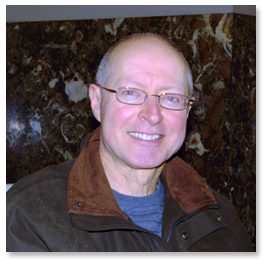 Born 1951, Portage la Prairie, Manitoba, Canada.
Born 1951, Portage la Prairie, Manitoba, Canada.
.
From an early age, Darryl periodically experienced the various things in life as one great motion, or action. Initially, this experience was not significant. By age fourteen, however, it contradicted his usual view of existence so much that he began to explore the difference. Drawn to investigate the basic physical happening of the moment, he would spend a portion of each day noticing the various sensations that would arise and pass.
.
Puzzled by the shifting states of perception that became evident, he began reading the works of philosophers like Jiddu Krishnamurti, Alan Watts, and others, who encouraged a direct exploration of life‘s movement. He also began exploring and practicing the awareness, concentration, and relaxation techniques offered in Yoga, Buddhism, Taoism, Sufism, Christianity, and certain contemporary psychologies. This exploration continued for the next seventeen years, alongside the usual experiences of work, relationship, and continuing education.
.
At thirty-one, after completing an undergraduate degree and wanting to expand his personal research, he looked for a recognized meditation teacher whose approach was compatible with his own, eventually moving to California to begin a nine-year apprenticeship with Ruth Denison. During this apprenticeship, he also had recurring contact with Jiddu Krishnamurti.
.
Throughout this, he had no interest in the enlightenment that was mentioned in many of these teachings and was, instead, fascinated by the ever-changing nuances of perception, thought, and circumstance. He was not drawn to guru figures, feeling his continuing investigation was more interesting.
.
As Darryl’s time with Ruth drew to an end, she arranged for him to meet the Advaita sage Robert Adams, and their subsequent conversations revealed that both he and Robert experienced life as an unformed, inexplicable happening. However, while his own interests would often lose themselves in descriptions of existence, Robert’s interest remained always with the larger, inexplicable event; it was obvious that he had no serious interest in anything else.
.
This meeting had significant impact on Darryl. He felt Robert was an example of where his own life was eventually moving, but also felt that he didn’t want to get there quickly. He went on to spend six years as a Buddhist meditation monk in the Thai Forest Tradition, under the guidance of Ajahn Sumedho, living in England and Switzerland, before disrobing and returning to Canada.
.
At that time, there was a strong desire to distance himself from any spiritual organization, or structure, and return to a more ordinary way of living.
.
Not long after, while lying in bed reading, he ran across a statement by Ramesh Balsekar, declaring that no one has ever had an experience of directing existence. As he considered this statement, it became absurdly obvious that he had not, in any way, created his physical and mental abilities, nor his needs, interests, urges, and concerns, and therefore could not possibly have created any of his actions. All of this was a movement of nature. It became clear that not only was existence an unformed, indefinable happening, but he did not exist as anything apart from that event.
.
Over the next few months, he tried to find any evidence that would contradict this, but it became apparent that both his, and everyone else’s, experience supported it. He began expressing this perspective to a few trusted friends, who subsequently had their own realizations, and he’s been speaking and writing about awakening ever since.
.
Throughout this apparent journey, Darryl has worked at various jobs, including ice fisherman, bus driver, suit salesman, child care worker, carpenter, and maintenance man. He is now retired and lives in Winnipeg, Canada.
.
He is not affiliated with any particular tradition.
.
.